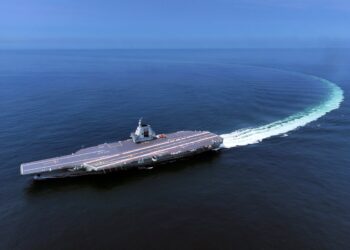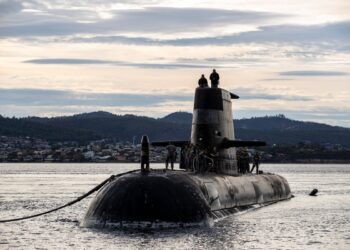**WARSAW, Poland —** Defense officials have sent requests for information to six countries regarding submarine designs for the Polish Orka (Orca) submarine program. This move comes as Prime Minister Donald Tusk approaches the end-of-year deadline for selecting a winning proposal.
In recent months, delegations from the Polish Ministry of Defense have visited France, Germany, Italy, Spain, and Sweden, and have also engaged with South Korean officials to discuss their offers and potential cooperation with Poland’s defense industry for the submarine procurement.
The urgency of the planned acquisition stems from the Polish Navy’s reliance on a single, outdated Soviet-designed submarine, the Kilo-class ORP Orzel. The new submarines are intended to enhance Poland’s deterrence capabilities in the Baltic Sea, with plans for equipping them with cruise missiles.
During a session of the Polish government on **September 17**, Tusk indicated that the planned contract will be signed at a government level, signifying a deeper political partnership with the offering nation. Tusk stated, “We have plenty [of submarines] to choose from,” and emphasized the importance of government-to-government decisions for such a significant investment in national security.
In the same session, the cabinet adapted a resolution mandating the selection of a final foreign partner for the Orka program by the end of **2025**. Several European companies have shown interest in delivering between three and four submarines. These include France’s Naval Group, Italy’s Fincantieri, Sweden’s Saab, and the U.K.’s Babcock International, all of which have signed agreements with the Polish state-run defense group PGZ to foster cooperation.
The chosen foreign supplier will need to work closely with PGZ Naval Shipyard, which holds a central role in Poland’s defense industry, making it an attractive partner for international competitors. Recently, at the **October 2025** Baltexpo industry show in Gdansk, Spain’s Navantia became the latest company to sign an agreement with PGZ to explore submarine procurement opportunities.
Navantia’s statement noted that the Letter of Intent includes evaluating the involvement of PGZ facilities as an industrial partner, particularly concerning the submarine acquisition program and other Navy procurements.
A spokesperson from the Polish ministry reported last May that offers from Germany, Italy, and Sweden received the highest scores from experts. However, the remaining bids have not been discarded. Notably, South Korea’s Hanwha Ocean is the only non-European supplier bidding for the Polish submarine contract and is collaborating with PGZ as well.
Hanwha Ocean’s manager, Hyunrok Park, indicated that they have prepared an industrial cooperation offer that includes a technology transfer and the establishment of a local maintenance and operations capacity in Poland. The company has already delivered three KSS-III-class submarines to the Republic of Korea Navy, with three additional units planned.
Furthermore, Hanwha Ocean views Poland as a potential gateway for exporting its KSS-III-class submarines, with aspirations for markets in Canada and Saudi Arabia. In Canada, the shortlist for submarine suppliers includes Germany’s ThyssenKrupp Marine Systems and Hanwha Ocean for a program expected to purchase up to 12 conventionally-powered submarines.
Saudi Arabia has been seeking new small-to-medium subs for years, with Fincantieri frequently cited as a leading contender due to existing ties between the two nations. At the **2023 IDEX** exhibition, Fincantieri showcased its S800 light submarine, designed for covert operations in shallow waters, which has garnered interest from several customers in the Gulf region.
Fincantieri estimates that it would take approximately four years to complete the first submarine of this category, equipped with five torpedoes and offering a minimal acoustic signature thanks to its fuel cell system.
**Contributors:** Elisabeth Gosselin-Malo in Milan.
**Reporter:** Jaroslaw Adamowski, Poland correspondent for Defense News.













